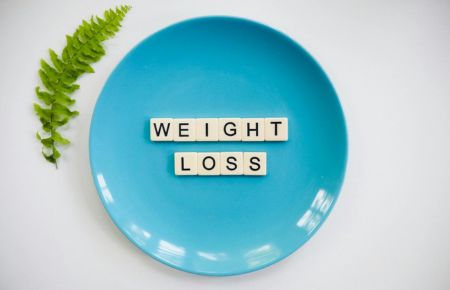Life is extremely hard for the vast majority of people. These exercises may help you let go and find relief.
Exercises for the alleviation of anxiety
Anxiety is a completely normal human reaction to stress. When there’s too much of it, though, anxiety can interfere with leading a healthy and happy life. Try any or a few of the following exercises at any time, any place, if you feel like you are in the grip of your anxiety, to get fast relief from it. The goal is to perform exercises that can quickly help you relax.
Why exercises for anxiety work
They speak to your body’s stress-related responses, such as an increased heart rate, fast breathing, and tense muscles, and they help replace them with what your body feels during relaxation.
1. Take a deep breath
Your body will be quick to realize your heart rate and breathing are a bit faster than usual. You might break out into a sweat and become dizzy or lightheaded. If you’re anxious, getting your breathing under control can relax both your body and mind.
Use the following to control your breathing if you feel anxious:
- Sit somewhere quiet and comfortable. Put one hand on your chest and the other on your stomach. Let your stomach rise and fall more than your chest when taking a deep breath.
- Breathe slowly and steadily in through your nose. Watch and feel the ascending hands while you breathe in. The hand on the chest should not rise, while the one resting on the abdomen will rise slightly.
- Breathe out from your mouth.
- Perform this at least 10 times or until you start to feel your anxiety fading.
2. De-stress through visualization
Have you ever heard the term “finding your happy place”? Indeed, whenever you conjure an image in your brain of somewhere that calms you down, it calms your brain and your body. If you feel anxious, take a seat in a quiet, comfortable place. Now imagine a very relaxing place of your choosing. There are no restrictions on what this relaxing place should look like: it can be anywhere in the world—real or imagined—as long as this image is very relaxing, happy, calm, and safe for you. Make it easy enough that you can think about this image any time you feel anxiety in the future.
Think of all the little details that would be present if you were right there. Consider how the place would smell, feel, and sound. Put yourself in that spot, relishing it without a care. Once you can visualize your “happy place,” close your eyes and breathe slowly and steadily through your nose and out of your mouth. Focus on your breathing and keep focusing on the place you thought about in your head. Visit this place in your mind every time you are anxious.
3. Muscle relaxation
With anxiety, you might feel muscle tension or strain. This muscular stress makes your anxiety more challenging to control when you are in the throes of it. If your muscular stress can be alleviated, then so, usually, can your anxiety levels.
To quickly release your muscle tension in an anxious moment:
- Sit down in a quiet, comfortable place. Close your eyes and start breathing. Breathe in slowly through your nose and out through your mouth.
- Use one of your hands to make a tight fist. Squeeze it very tightly.
- Hold on to that squeeze in your fist for a few seconds and notice how all of that tension feels in your hand.
- Gradually let the tension go. You might notice sensations, like the tension leaving your hand. Very soon, it will begin to feel light and relaxed.
- Continue tensing and then releasing other muscle groups in your body, more if you wish, from your hands, legs, shoulders, or feet. You might work up and down your body, tensing various muscle groups. Don’t tense the muscles in any part of your body where you are injured or have pain, as that may aggravate your injury.
4. Chill with counting
A simple method to reduce anxiety is counting. When you feel anxiety rising, find a quiet and comfortable place where you can sit. Slowly count to 10 as you close your eyes. Repeat up to the count of 20 or higher if needed. Keep counting until you feel your anxiety decreasing.
Sometimes this relief comes quickly, but other times it may take a bit. Stay calm and patient. Counting can be very reassuring because it diverts you from your anxiety. It is particularly useful when you are in a crowded or busy space, like a shop or on the train, where other anxiety exercises may be difficult to accomplish.
5. Relax by being present
Mindfulness is the practice of being present in your current state and surroundings gently, without judgment. Staying present can help you create a calm state of mind when your thoughts are racing and anxiety is building.
To bring yourself out of your mind and into the present:
- Find a quiet and comfortable place to sit down; now close your eyes.
- Notice your breathing and how your body feels.
- Now direct your focus to the sensations you are aware of around you. Ask yourself what you feel outside your body. Notice what you can hear, smell, and feel around you.
- Gently move your attention from your body to the environment at least for a couple of shifts and back again until you feel your anxiety beginning to fade.
6. Relax by breaking your anxious thought cycle
Sometimes it’s difficult to think clearly when you’re anxious. At times, anxious thinking can lead to harmful thoughts that are untrue or cause behaviors that worsen anxiety. It may be helpful to interrupt your anxious thoughts so you can think clearly and respond appropriately.
Here’s a technique to break the cycle of anxious thoughts:
- Ask yourself if you worry too much. It’s important to recognize that it’s endless worrying.
- Try different methods to interrupt your anxious thinking: hum a silly song about your anxiety at a fast pace, or speak your fears in a funny voice. Pick a positive thought to replace your anxiety. This might be someone you love, your happy place, or something happening later, like eating dinner. Read a book, or play soft music in the background. Notice how you feel when your attention shifts from anxiety to something else.
- Do you feel worse? Anxiety exercises aren’t universally effective and can aggravate symptoms when GAD is present. If you suspect you have generalized anxiety disorder, consult a physician for more effective treatment.
Anxiety can muscle in on thoughts and activities, and sometimes it’s hard to shake off. But understand that there is relief, even if it feels like you’re caught up in it. Next time you’re anxious, try one of these exercises. Also, check out some of the best apps for anxiety, from nature sounds to acupressure. If your anxiety frequently interferes with your daily life, happiness, and activities, consider consulting a mental health professional for additional help.
Thank You for Visiting our website mhnrc.org. If you liked the article, then share it with others.


